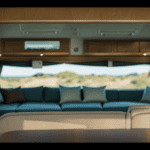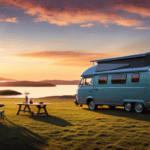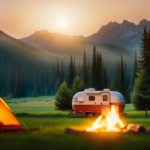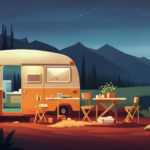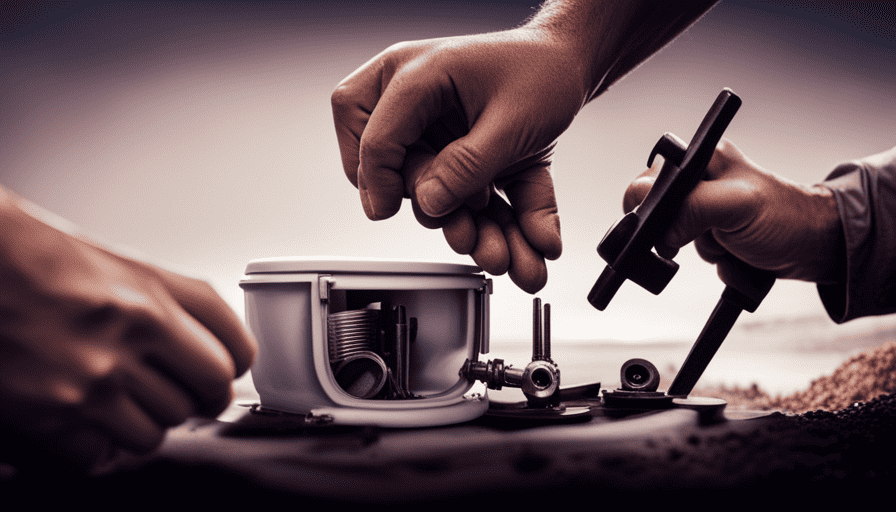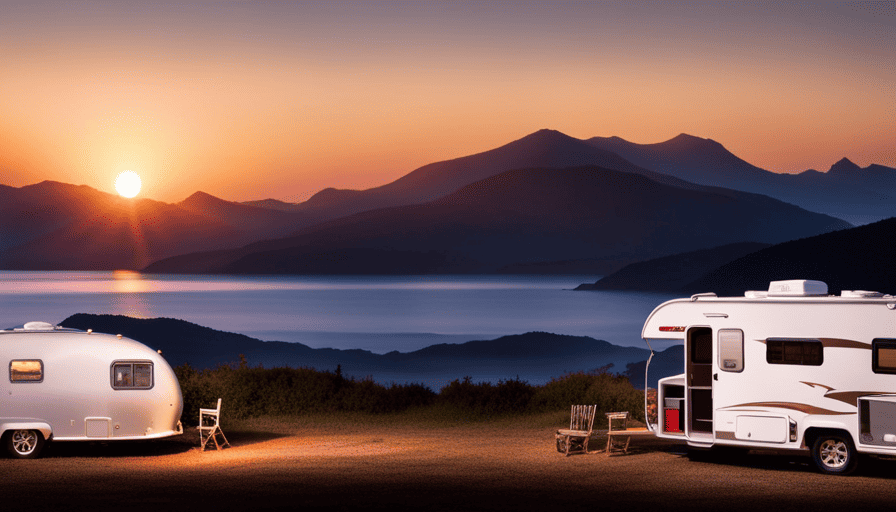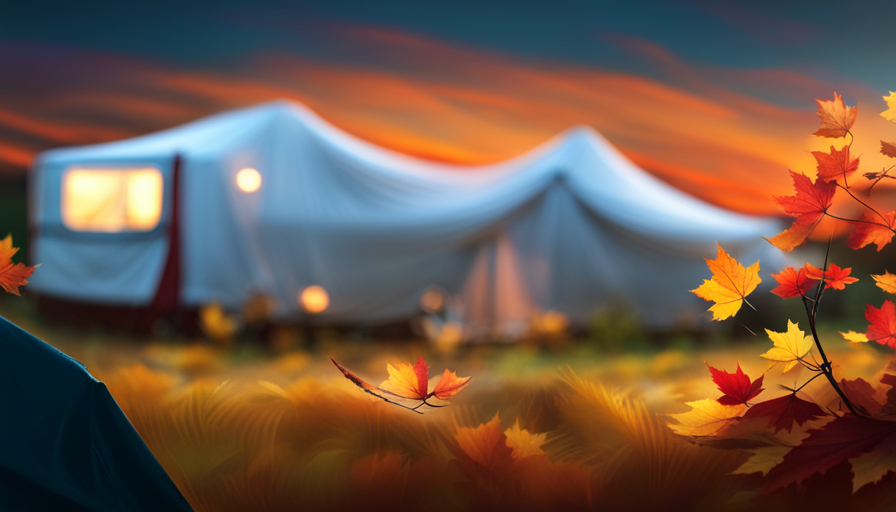Imagine cruising down the open road, feeling the wind in your hair and the excitement of adventure at your fingertips. Now, envision taking this experience to the next level with the luxury and convenience of your very own camper van. These versatile vans offer the perfect blend of freedom and comfort, allowing you to explore the world at your own pace.
But before you embark on this exciting journey, it’s important to answer one key question: how much are camper vans? In this article, we will delve into the various types of camper vans available and the factors that influence their prices. We will also explore the pros and cons of buying new versus used, as well as budget-friendly and mid-range options. Additionally, we’ll discuss financing and insurance, as well as other costs to consider.
By the end of this article, you’ll have a comprehensive understanding of camper van prices and invaluable tips for saving money on your purchase. So let’s hit the road and dive into the world of camper van ownership.
Key Takeaways
- The price of a camper van depends on factors such as customization, size and type, age and condition, and rental options.
- Mid-range camper vans from trusted brands like Winnebago and Roadtrek typically range from $50,000 to $80,000 and include features like a kitchenette, bathroom facilities, and sleeping accommodations for two to four people.
- Custom built and high-end models offer more luxury and customization options, with the cost of customization varying depending on the extent of modifications and upgrades.
- Luxury camper vans provide spacious layouts, high-end finishes, state-of-the-art technology, and deluxe amenities.
Types of Camper Vans Available
So, you’re probably wondering what types of camper vans are out there, right? Well, when it comes to camper van options, there are plenty to choose from.
One option is to rent a camper van. Many companies offer camper van rental options, allowing you to experience the freedom of the open road without the commitment of owning a van.
Another option is to convert a van into a camper yourself, using a camper van conversion kit. These kits provide you with all the necessary components to transform a regular van into a cozy and functional camper van.
When it comes to camper van rental options, you can find a variety of sizes and styles to suit your needs. From small and compact vans perfect for solo adventures, to larger vans with all the amenities for a family vacation, the choices are endless.
Additionally, camper van conversion kits come in different sizes and designs, allowing you to customize your camper van according to your preferences.
Factors that influence camper van prices include the size of the van, the level of amenities and features, the age and condition of the van, and the popularity of the brand. By considering these factors, you can find a camper van that fits your budget and meets your requirements.
So, let’s dive into the next section and explore these factors in more detail.
Factors That Influence Camper Van Prices
When you’re considering purchasing a camper van, there are several factors that can influence the price. Here are four key factors to keep in mind:
-
Camper Van Customization: The level of customization you desire can significantly impact the price. From basic models to fully equipped luxury vans, the cost will vary based on the features and amenities you choose.
-
Size and Type: The size and type of camper van you select will also affect the price. Compact vans are generally more affordable, while larger motorhomes with more living space tend to be pricier.
-
Age and Condition: Like any vehicle, the age and condition of a camper van can have a significant impact on its price. Newer models with low mileage and excellent maintenance records will command a higher price tag, while older or heavily used vans will be more budget-friendly.
-
Camper Van Rental Options: Some camper van manufacturers offer rental options, allowing you to try out a specific model before committing to a purchase. These rental fees are often deducted from the final purchase price, making it a cost-effective way to test different vans.
Considering these factors, you can make an informed decision on whether to opt for a new or used camper van.
New vs Used Camper Vans
When considering buying a camper van, it’s important to weigh the pros and cons of buying new versus used.
A new camper van offers the benefit of being in pristine condition and often comes with warranties and the latest features.
On the other hand, buying used can save you money and may come with added character, but it also carries the risk of potential issues and the need for repairs.
If you decide to go with a used camper van, it’s crucial to do thorough research, inspect the vehicle, and ask for maintenance records to ensure you’re making a wise investment.
Pros and Cons of Buying New
One of the advantages of purchasing a brand-new camper van is that it comes with a manufacturer’s warranty, ensuring peace of mind for any unexpected repairs. This means that if anything goes wrong with the vehicle within a certain period, the manufacturer will cover the cost of repairs or replacements. Additionally, new camper vans often come with the latest technology and features, providing a more comfortable and convenient travel experience. However, there are also some downsides to buying new. Firstly, new camper vans can be quite expensive, and their value depreciates quickly once they are driven off the lot. Additionally, there may be a limited selection of new models available, making it harder to find the perfect fit for your needs. Despite these drawbacks, many people still choose to purchase new camper vans due to the assurance of a warranty and the appeal of having the latest features. Moving on to the next section, let’s explore the pros and cons of buying used camper vans.
Pros and Cons of Buying Used
Looking to save some money and still get a reliable vehicle for your travels? Have you considered buying a used camper van? When comparing buying used versus new, there are several advantages to purchasing a pre-owned camper van.
Firstly, the cost of a used van is significantly lower than that of a new one, allowing you to save a considerable amount of money. Additionally, used camper vans have already gone through their initial depreciation, meaning you won’t experience as steep a decline in value compared to a new vehicle.
However, it’s important to consider potential risks when buying used. There may be hidden mechanical issues or wear and tear that could require costly repairs down the line. That’s why it’s crucial to thoroughly inspect the vehicle and obtain a comprehensive vehicle history report before making a purchase.
With these factors in mind, let’s move on to some tips for buying a used camper van.
Tips for Buying a Used Camper Van
If you’re in the market for a pre-owned recreational vehicle, consider these key tips to ensure a successful purchase. Here are some buying tips and an inspection checklist to help you make an informed decision:
-
Research: Do your homework and research different camper van models, their features, and prices.
-
Inspect the exterior: Check for any signs of damage, rust, or leaks. Look closely at the tires, windows, and roof.
-
Check the interior: Examine the kitchen appliances, bathroom facilities, and sleeping areas for any signs of wear or damage.
-
Test the systems: Make sure to test the electrical, plumbing, and heating systems to ensure they’re in proper working condition.
-
Get a professional inspection: Consider hiring a professional to thoroughly inspect the camper van before making a final decision.
By following these buying tips and conducting a thorough inspection, you can find a reliable and suitable pre-owned camper van.
Now let’s explore some budget-friendly camper van options.
Budget-Friendly Camper Van Options
There’s a wide range of wallet-friendly camper van options available for those on a budget. If you’re not ready to commit to buying a camper van just yet, you can explore camper van rental options. Many companies offer affordable rental rates, allowing you to experience the camper van lifestyle without the long-term financial commitment.
On the other hand, if you’re more of a do-it-yourself enthusiast, you can consider DIY camper van conversions. This involves purchasing a used van and transforming it into a camper van yourself. It may require some time and effort, but it can be a cost-effective way to own a camper van.
For those looking to buy a budget-friendly camper van, there are several options available. You can find older models that are still in good condition for a lower price. These vans may have higher mileage, but with proper maintenance, they can still provide a comfortable and reliable camping experience.
Another option is to look for camper van manufacturers that offer entry-level models at a lower price point. These vans may have fewer amenities and features compared to higher-end models, but they can still provide the essentials for a great camping trip.
Now, let’s move on to the next section about mid-range camper van options.
Mid-Range Camper Van Options
Explore the world of mid-range camper van options and discover the perfect mobile oasis for your next adventure. When it comes to mid-range camper van brands, there are a few standout options that offer a balance between affordability and features.
One popular brand in this range is Winnebago, known for their reliable and well-designed camper vans. Their mid-range models, such as the Travato and the Revel, offer comfortable living spaces and efficient layouts, making them ideal for both weekend getaways and longer trips.
Another trusted brand in the mid-range category is Roadtrek, which offers a range of camper vans with different floor plans and amenities to suit various needs.
In terms of mid-range camper van prices, you can expect to pay anywhere from $50,000 to $80,000, depending on the brand and specific model. This price range allows for a decent level of comfort and convenience without breaking the bank. With mid-range options, you can enjoy features such as a kitchenette, bathroom facilities, and sleeping accommodations for two to four people.
As you delve into the world of mid-range camper vans, you’ll find that there are plenty of choices to fit your budget and preferences. Now, let’s move on to the next section and explore the luxurious options available for those seeking the ultimate camper van experience.
Luxury Camper Van Options
When it comes to luxury camper van options, there are a few key points to consider.
First, Class C Motorhomes offer a comfortable and spacious interior, making them a popular choice among luxury enthusiasts.
Additionally, custom built and high-end models provide the opportunity to personalize your camper van to your specific preferences and needs.
Lastly, luxury features and amenities such as high-quality finishes, state-of-the-art technology, and luxurious furnishings can take your camping experience to the next level.
Class C Motorhomes
Camper vans are a fantastic option for those seeking the perfect blend of comfort and adventure on their road trips. When it comes to class C motorhome models, there are many options to choose from. Some of the best class C motorhome brands include Winnebago, Thor Motor Coach, and Jayco. These brands are known for their quality construction, innovative features, and reliable performance.
Class C motorhomes are larger than class B vans, offering more living space and amenities. They typically have a sleeping area over the cab, a separate bedroom in the back, a kitchenette, a bathroom, and a dining area. With their spacious interiors and convenient layouts, class C motorhomes provide a comfortable and enjoyable travel experience.
Moving on to custom built and high-end models, these offer even more luxury and customization options for those looking for a truly unique and personalized camper van experience.
Custom Built and High-End Models
If you’re looking for a truly unique and personalized travel experience, you’ll love the custom built and high-end models of class C motorhomes. These camper vans offer an array of luxury features and customization options that can be fully tailored to suit your specific needs and preferences.
From the layout and design to the materials and finishes, you have the freedom to create the camper van of your dreams. However, keep in mind that custom camper van options can come with a higher price tag. The cost of customization varies depending on the extent of modifications and upgrades you choose. But for those who value the freedom and luxury of a personalized camper van, the investment is well worth it.
Now, let’s explore the luxurious features and amenities that these custom built and high-end models have to offer.
Luxury Features and Amenities
Moving on from the discussion about custom-built and high-end models, let’s now explore the world of luxury features and amenities available in camper vans. When it comes to luxury camper van rentals, there are several top brands that offer exceptional comfort and style. These brands prioritize top-notch craftsmanship and innovative design, ensuring a luxurious experience for travelers. To give you a glimpse of the possibilities, here is a table showcasing some of the outstanding features you can find in luxury camper vans:
| Feature | Description | Brand |
|---|---|---|
| Spacious layout | Ample living and sleeping area | Airstream |
| High-end finishes | Premium materials and stylish interiors | Winnebago |
| State-of-the-art technology | Advanced entertainment and connectivity options | Roadtrek |
| Deluxe amenities | Luxurious bathrooms and fully-equipped kitchens | Leisure Travel Vans |
Now that we’ve explored the world of luxury camper vans, let’s delve into the next section, where we will discuss financing and insurance options for these incredible vehicles.
Financing and Insurance for Camper Vans
When it comes to financing a camper van, there are various options and loans available. It’s important to consider factors such as interest rates, loan terms, and monthly payments to find the best option for your budget.
Additionally, insurance considerations are crucial to ensure that you have proper coverage for your camper van, including liability, collision, and comprehensive coverage.
Lastly, it’s essential to factor in maintenance and repair costs, as owning a camper van requires regular upkeep and occasional repairs.
Financing Options and Loans
One popular option for purchasing camper vans is through financing, which allows individuals to spread out the cost over a period of time and make manageable monthly payments. When considering camper van loans, there are a few requirements to keep in mind.
First, lenders typically require a down payment, which can vary depending on factors such as credit score and the price of the van.
Second, lenders will assess the borrower’s credit history and income to determine eligibility and interest rates.
Third, it’s important to compare financing options from different lenders to ensure you get the best deal.
Finally, consider the loan term and monthly payment amount to ensure it fits within your budget.
With a camper van loan in place, you can start planning your adventures on the open road.
Now, let’s shift our focus to insurance considerations.
Insurance Considerations
When it comes to financing a camper van, it’s important to consider the insurance coverage and premiums as well. Insurance is a crucial aspect of owning a camper van, as it provides financial protection in case of accidents or damages.
The cost of insurance coverage for a camper van can vary depending on factors such as the model, age, and usage of the vehicle. Additionally, insurance premiums may also be influenced by the owner’s driving history and location.
It’s advisable to shop around and compare insurance quotes from different providers to find the best coverage at an affordable price.
As we delve into the next section about maintenance and repair costs, it’s worth noting that insurance plays a significant role in ensuring the overall financial security and peace of mind when owning a camper van.
Maintenance and Repair Costs
Taking care of your camper van can be a costly endeavor, but the peace of mind that comes with knowing you’re prepared for any unexpected repairs is priceless.
Here are some maintenance tips and common repair issues to keep in mind:
-
Regularly inspect and replace worn-out tires to ensure optimal safety and performance.
-
Keep the engine well-maintained by changing the oil and filters according to the manufacturer’s recommendations.
-
Check and clean the camper van’s battery connections to prevent any electrical issues.
Some common repair issues you may encounter include water leaks, malfunctioning electrical systems, and problems with the plumbing. It’s important to address these issues promptly to prevent further damage and to avoid costly repairs down the line.
When considering the overall costs of owning a camper van, it’s important to take into account additional expenses such as fuel, campground fees, and insurance.
Additional Costs to Consider
When considering the additional costs of owning a camper van, there are a few key points to keep in mind.
First, campground fees and parking can vary depending on the location and amenities offered. It’s important to research and budget for these expenses accordingly.
Second, fuel and gas expenses should be factored in, as camper vans tend to be less fuel-efficient than regular vehicles.
Lastly, maintenance and upkeep costs should be accounted for, including regular oil changes, tire rotations, and any repairs that may arise. Being prepared for these additional costs will help ensure a smooth and enjoyable camper van experience.
Campground Fees and Parking
Campground fees can quickly add up, so it’s essential to budget accordingly when planning your camper van adventure. Before hitting the road, it’s important to research campground regulations and camper van parking restrictions in the areas you plan to visit.
Some campgrounds may have specific rules on the size or type of vehicles allowed, as well as limitations on the length of stay. Additionally, certain popular destinations may have limited parking spaces for camper vans, so it’s crucial to make reservations in advance.
By familiarizing yourself with these regulations and restrictions, you can avoid any unexpected fees or difficulties finding suitable parking spots.
Now, let’s move on to the next section and discuss fuel and gas expenses.
Fuel and Gas Expenses
When it comes to camper vans, there are several factors to consider beyond just the initial purchase price. In my previous discussion about campground fees and parking, I highlighted the ongoing costs associated with staying at different sites.
Now, let’s shift our focus to another important aspect of owning a camper van: fuel and gas expenses. One of the key considerations in this area is the fuel efficiency of the vehicle. Camper vans vary in their fuel efficiency, so it’s important to research and choose one that aligns with your budget and travel plans. Additionally, some camper vans offer alternative fuel options, such as electric or hybrid models, which can help reduce fuel costs and environmental impact.
As we delve into the topic of maintenance and upkeep, it’s crucial to understand how these factors can affect the overall cost of owning a camper van.
Maintenance and Upkeep
To keep your camper van in tip-top shape and ensure a smooth and enjoyable travel experience, you’ll need to stay on top of regular maintenance and upkeep. Regularly checking and changing the oil, filters, and spark plugs is essential for the engine’s performance.
Additionally, inspecting the tires, brakes, and suspension system will help ensure your safety on the road. It’s also important to clean and maintain the exterior and interior of the camper van, as dirt and grime can lead to deterioration.
Pay attention to any leaks, both in the plumbing system and the roof, and address them promptly to avoid further damage. Common camper van problems include electrical issues, water system malfunctions, and problems with the propane system.
By following these maintenance tips and addressing problems promptly, you can keep your camper van running smoothly.
Speaking of camper van purchases, here are some tips for saving money.
Tips for Saving Money on Camper Van Purchases
If you’re looking to save some cash on your camper van purchase, here’s a helpful tip for you: opting for a used one can be a total game-changer, making your dream of hitting the road more affordable and within reach!
Here are a few tips for negotiating prices and finding the best time to buy camper vans:
-
Research and compare prices: Before making a purchase, spend some time researching the market and comparing prices. Look at different websites, dealerships, and classified ads to get an idea of the average price range for camper vans. This will give you a better understanding of what a fair price is and help you negotiate effectively.
-
Consider buying off-season: The best time to buy a camper van is during the off-season when demand is lower. Many sellers may be willing to negotiate and lower their prices to attract buyers. Keep an eye out for sales and promotions during this time.
-
Be prepared to negotiate: Don’t be afraid to negotiate the price with the seller. Start with a reasonable offer based on your research and be prepared to walk away if the price doesn’t meet your budget. Remember, there are plenty of camper vans out there, so don’t settle for a price that doesn’t work for you.
-
Get a pre-purchase inspection: Before finalizing the purchase, consider hiring a mechanic to conduct a thorough inspection of the camper van. This will help identify any potential issues or hidden costs that could impact the final price.
By following these tips, you can save money on your camper van purchase and make your dream of hitting the road a reality.
In the next section, we will discuss the conclusion and final thoughts on camper van maintenance and upkeep.
Conclusion and Final Thoughts
After discussing various tips for saving money on camper van purchases, let’s now move on to the conclusion and final thoughts on the matter.
When it comes to buying a camper van, one of the first decisions you need to make is whether to buy new or used. Both options have their pros and cons, and it ultimately depends on your preferences and budget.
Buying a new camper van offers the advantage of having the latest features and technology, as well as the peace of mind that comes with a warranty. However, new camper vans can be quite expensive, and they tend to depreciate quickly in value.
On the other hand, buying a used camper van can save you a significant amount of money upfront. While you may not get all the bells and whistles of a new model, you can often find well-maintained used vans that still have plenty of life left in them.
When considering whether to buy new or used, there are a few factors to consider. Firstly, think about your budget and how much you are willing to spend. Consider your future travel plans and how much you will be using the van. If you plan on using it frequently, investing in a new van might be worth it for the long-term reliability. However, if you only plan on using it occasionally, a used van could be a more cost-effective option.
Buying a camper van is an exciting endeavor, and there are many factors to consider before making a decision. By weighing the pros and cons of buying new versus used, taking into account your budget and travel plans, you can make an informed choice that suits your needs.
Happy camping!
Frequently Asked Questions
What are the different types of camper van layouts?
There are several types of camper van layouts to choose from.
When it comes to bed options, you have the choice of a fixed bed, which is a permanent sleeping area, or a convertible bed, which can be transformed from a seating area into a bed.
As for kitchen layouts, options include a galley-style kitchen along one side of the van or a compact kitchenette with a sink, stove, and storage space.
Each layout offers its own advantages and can be customized to suit your needs.
Are there any specific factors that affect insurance rates for camper vans?
Factors affecting camper van insurance rates include the age and condition of the vehicle, the driver’s age and driving record, and the intended use of the van.
According to a study conducted by an insurance provider, the average annual cost of insuring a camper van is around $800 to $1,200.
To find affordable options, consider comparing quotes from different insurance companies, taking advantage of discounts, and maintaining a clean driving record.
What are some common additional costs associated with owning a camper van?
Common maintenance costs associated with owning a camper van include regular oil changes, tire rotations, and brake inspections. Additionally, routine servicing of the engine, transmission, and electrical systems may be necessary.
Camper van accessories, such as bike racks, awnings, and roof storage, can also add to the overall cost. It’s important to consider these additional expenses when budgeting for owning a camper van, as they can vary depending on the make and model of the vehicle.
Are there any specific tips for finding budget-friendly camper van options?
When it comes to finding budget-friendly camper van options, there are a few tips I’ve learned along the way.
Firstly, consider looking into affordable camper van rentals. Websites like Outdoorsy and RVshare offer a wide range of options at competitive prices.
Additionally, check out local classifieds or online marketplaces for used camper vans. Sometimes, you can find great deals from individuals who’re looking to sell their camper vans at a lower price.
What are some important considerations when deciding between a new or used camper van?
When deciding between a new or used camper van, there are important considerations to keep in mind.
Pros and cons of financing options for new camper vans should be considered, as financing a new vehicle can be easier and may come with warranty coverage.
On the other hand, buying a used camper van from a reputable dealer has its advantages, such as lower upfront costs and potentially lower depreciation.
Ultimately, the decision depends on your budget, preferences, and individual needs.
Conclusion
In conclusion, camper vans offer endless possibilities for adventure and freedom on the open road. From budget-friendly options to luxurious models, there’s a camper van to suit every traveler’s needs. However, it’s important to consider factors such as the type of van, its condition, and additional costs like financing and insurance.
By doing thorough research and considering all options, you can find the perfect camper van that fits your budget and lifestyle. So, why wait? Embrace the wanderlust and hit the road with your very own home on wheels. Happy travels!



